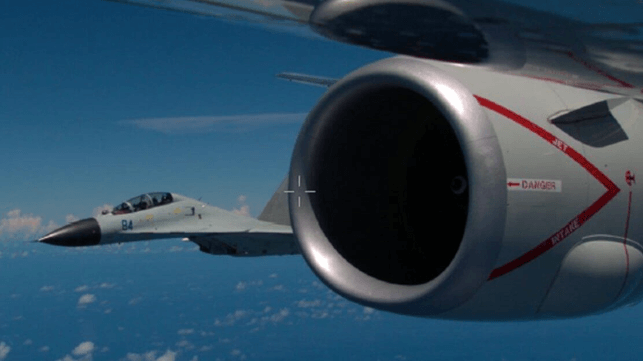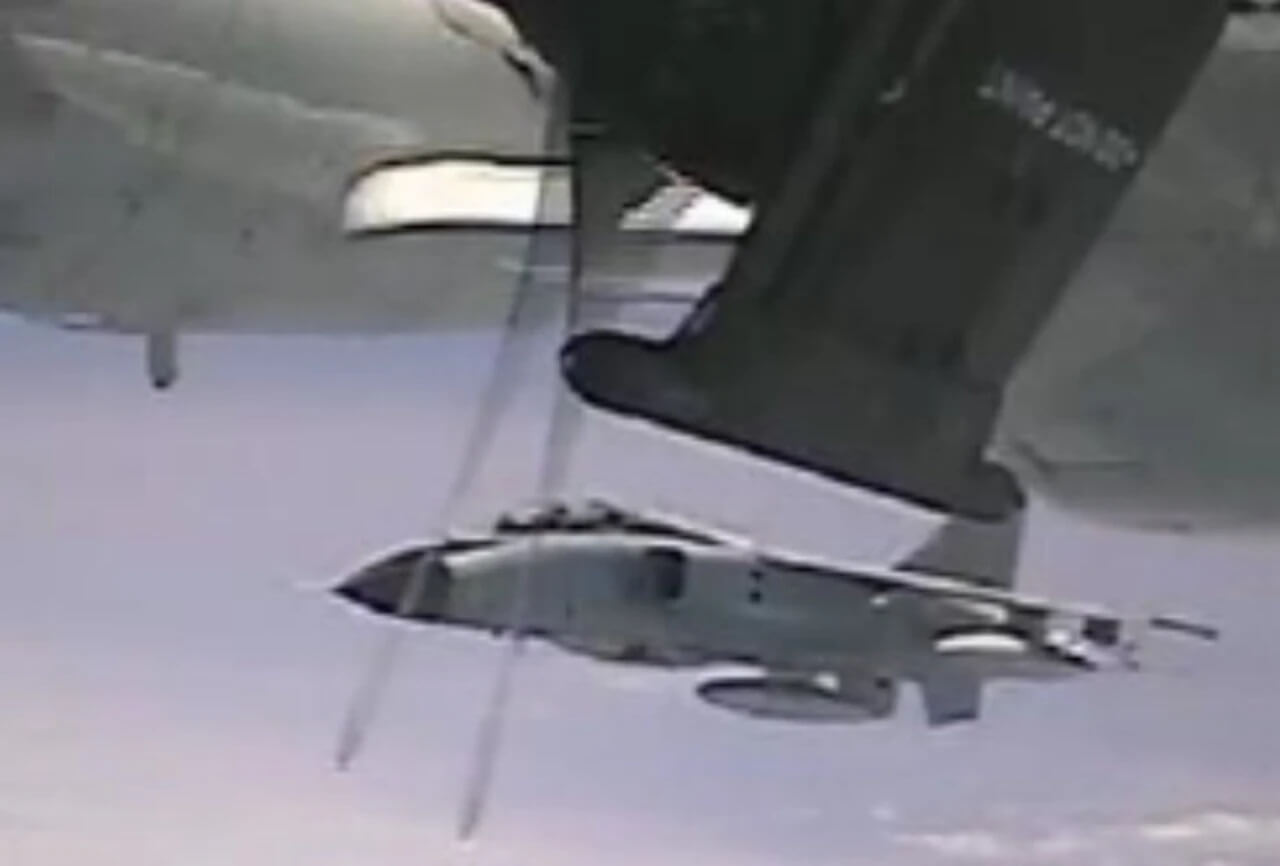Chinese Fighters Made 15 "Risky and Coercive" Passes at US Navy Aircraft

The U.S. Department of Defense has released a collection of declassified videos showing 15 different "coercive and risky" interactions between Chinese fighter pilots and U.S. Navy surveillance planes in the South China Sea. The videos depict interactions over the past two years and show Chinese fighters conducting close-quarters maneuvers, including flying in front of Navy aircraft and approaching to within as little as 15 feet.
 A Chinese fighter re-approaches a U.S. Navy aircraft after the U.S. aircrew took evasive maneuvers, May 24, 2022 (Pentagon)
A Chinese fighter re-approaches a U.S. Navy aircraft after the U.S. aircrew took evasive maneuvers, May 24, 2022 (Pentagon)
The department said that the run-ins reflect a pattern of increasingly assertive Chinese actions, which started to escalate in the fall of 2021. According to the Pentagon, these "unsafe and unprofessional" interactions are a deliberate military strategy. "The goal of the PLA's behavior is to pressure the United States and other nations to reduce or cease lawful operations near areas where Beijing claims territorial sovereignty," the department asserted.
China claims sovereignty over the vast majority of the South China Sea under its sweeping "nine-dash-line" and "Four Sha" policies, including areas located hundreds of nautical miles from Chinese shores. The Permanent Court of Arbitration in the Hague rejected these claims in a landmark ruling in 2016, but China has broadly ignored the court's decision.
Beijing also claims sovereignty over the self-governing island of Taiwan, along with the full width of the Taiwan Strait, including the strait's international waters. The U.S. Navy conducts regular transits of the strait with warships and patrol aircraft to reinforce international norms on freedom of navigation.
The Navy's encounters with Chinese forces in the air show a regular pattern: close approaches alongside the wing, occasionally followed by a pass in front of the aircraft. Additional methods mentioned by the Pentagon included releasing flares in front of the aircraft.
In one egregious instance in June 2022, a PLA fighter pilot intercepted a U.S. Navy P-8 Poseidon over the South China Sea, approached to within 40 feet, and flashed the aircraft's weapons. When the U.S. operator made radio contact, "the PLA pilot responded using explicit language, including an expletive."
Close approaches raise the risk of collision, and accidents have happened before. In 2001, a Chinese fighter pilot's miscalculation led to contact with a U.S. Navy EP-3 maritime patrol plane. The fighter went down and its pilot was lost at sea; the larger American aircraft made a forced landing on Hainan Island, where the crew were questioned and the plane was examined by Chinese investigators.
The experience is not limited to U.S. assets. Canadian patrol aircraft have also reported close encounters with Chinese fighters over the past year.
New Video: Chinese fighter jets came within 5 meters of a Canadian plane in aggressive, abnormal, + unusual intercept.
— Ian Ellis (@ianellisjones) October 17, 2023
"They became very aggressive and to a degree we would deem it unsafe + unprofessional," Maj. Gen. Iain Huddleston said.
pic.twitter.com/R8TuioH3Xa
